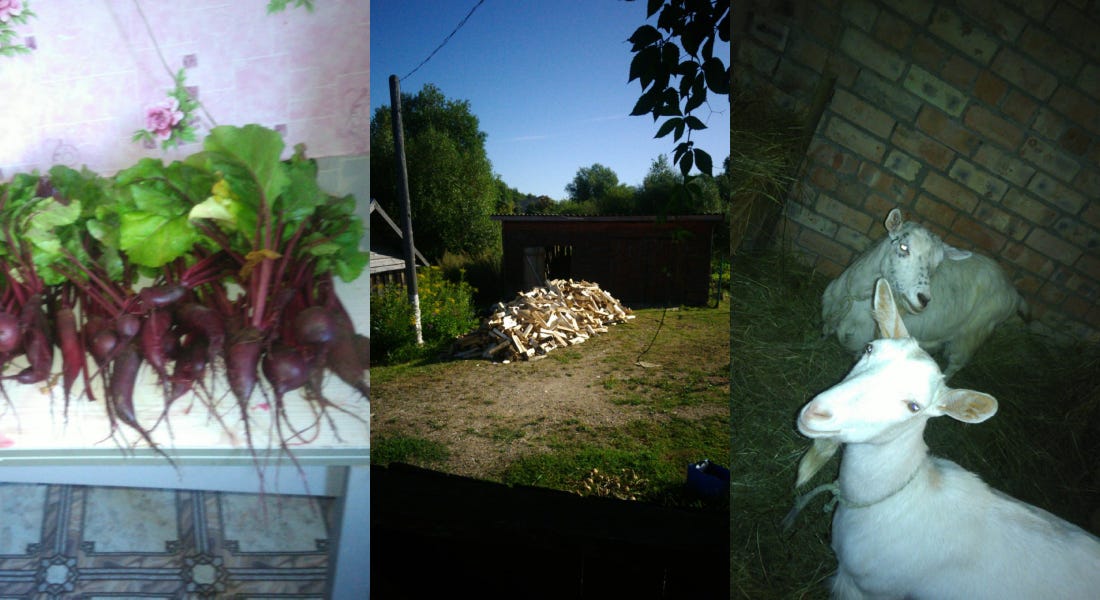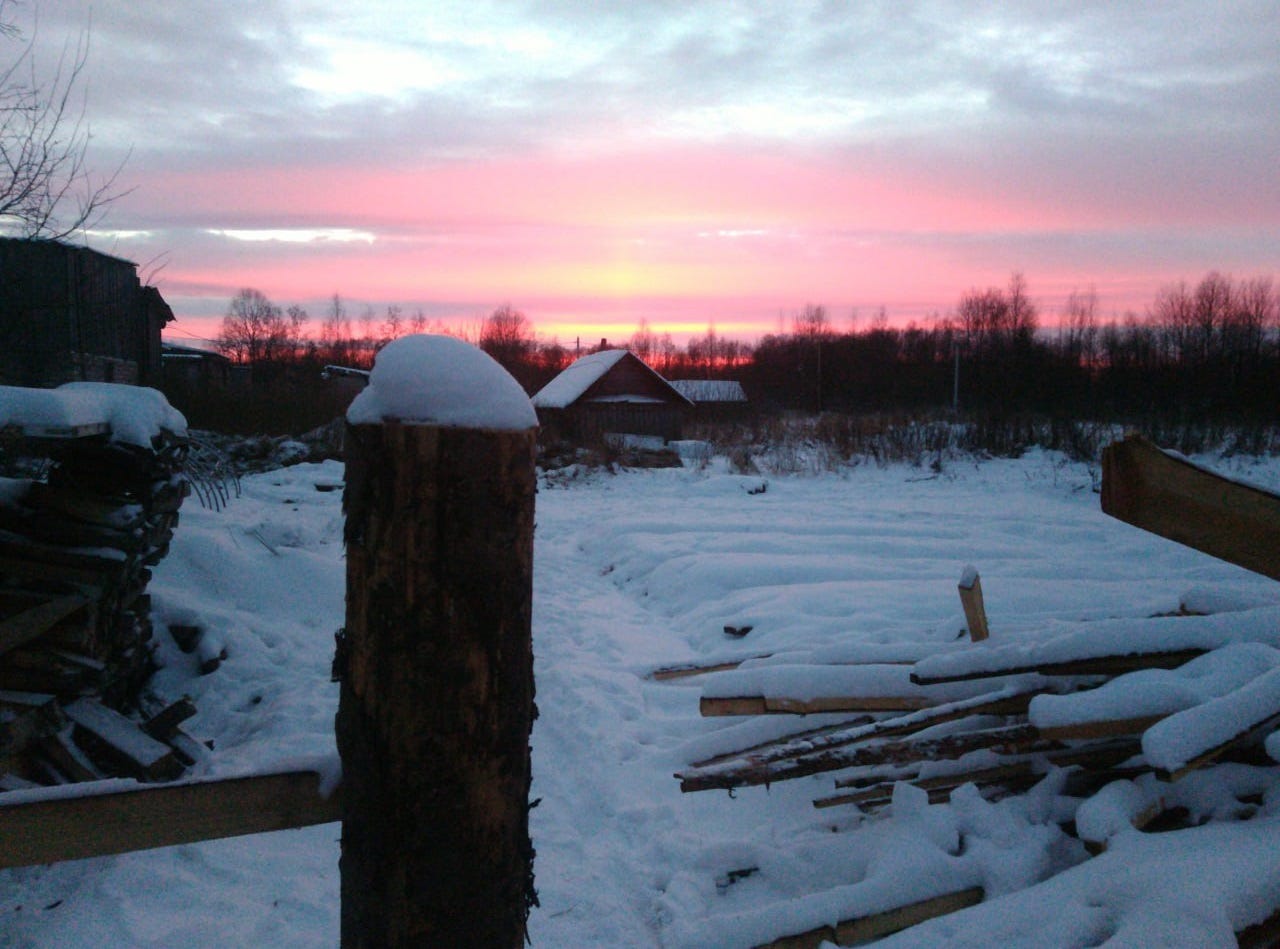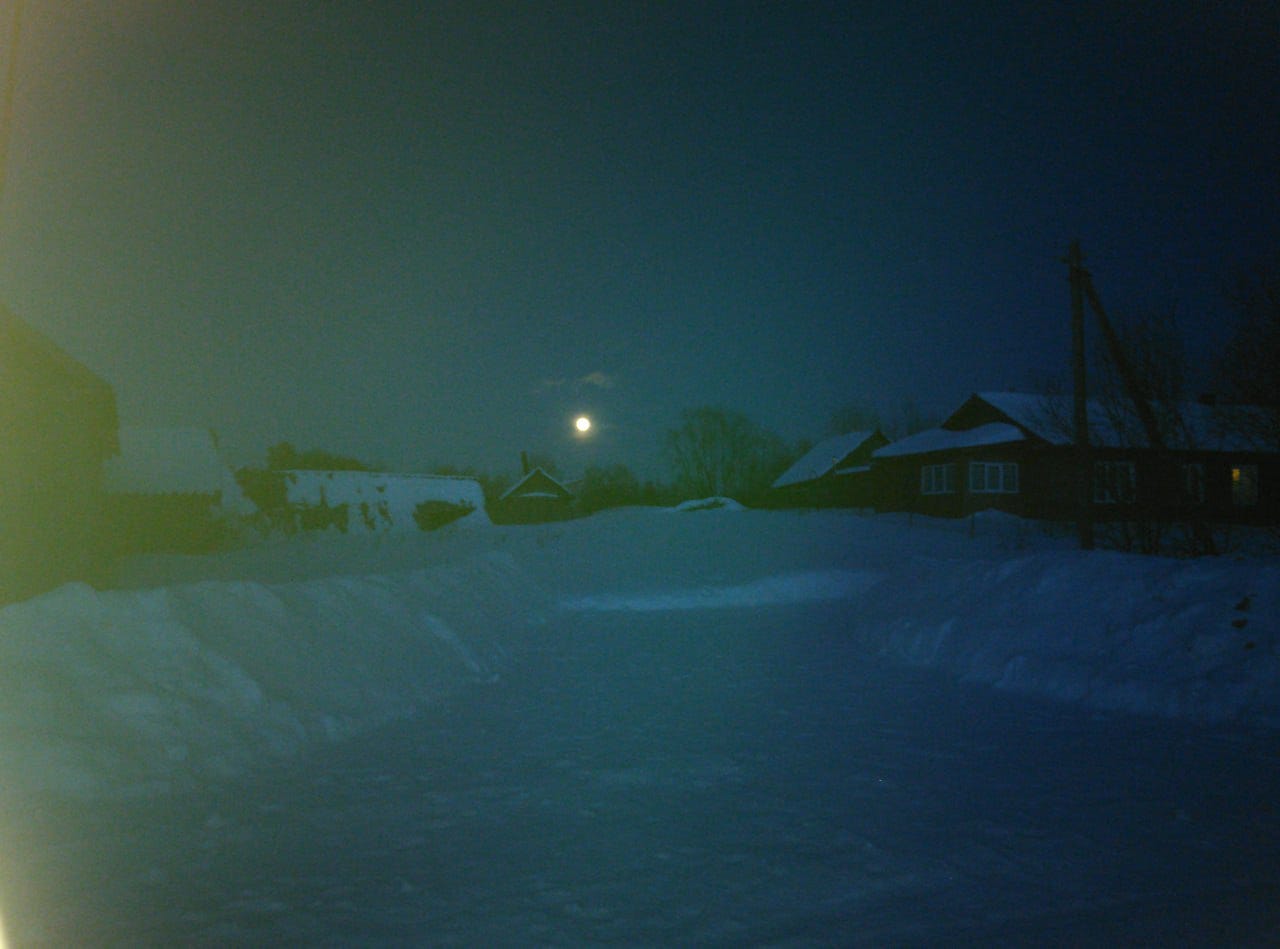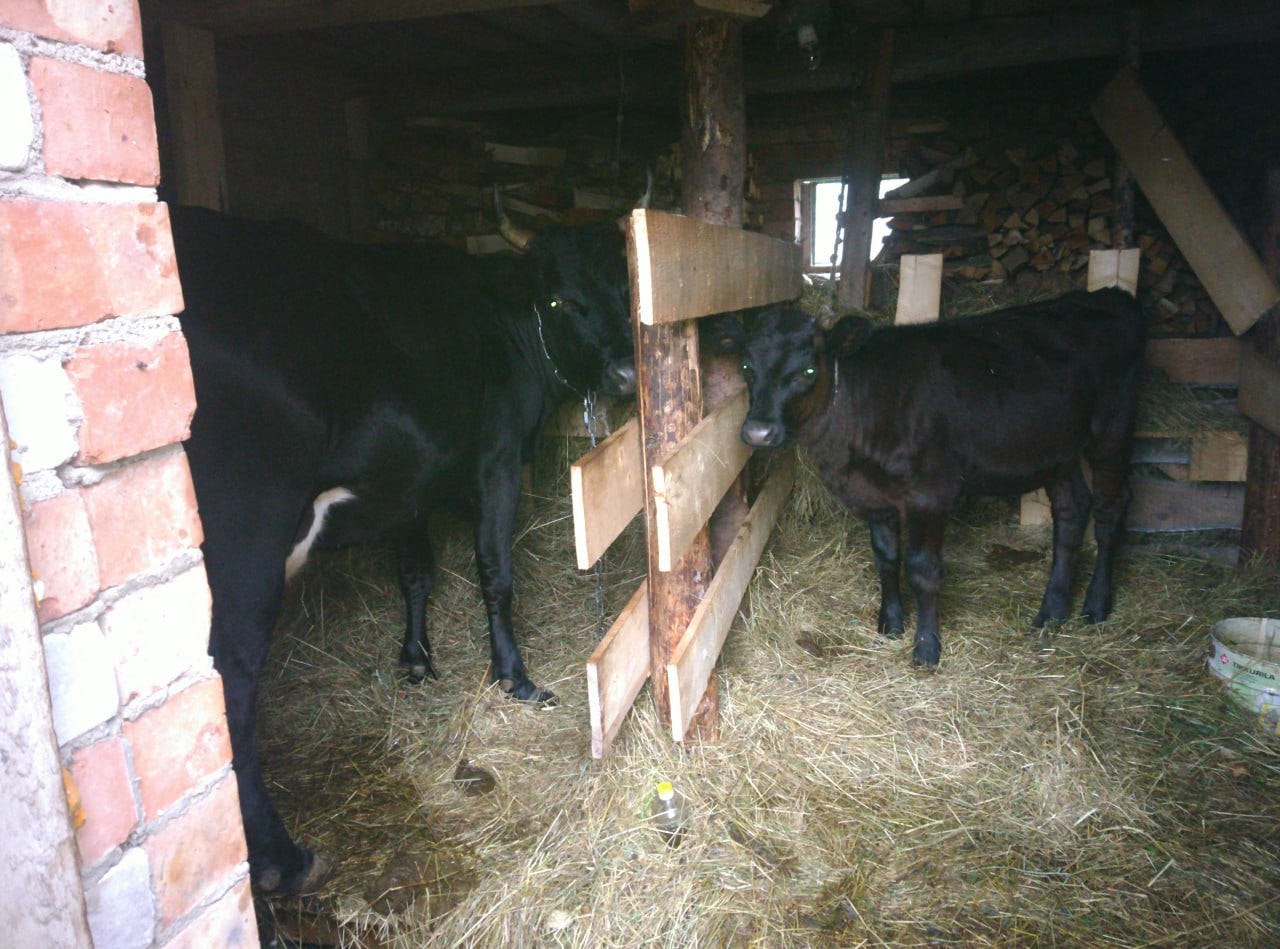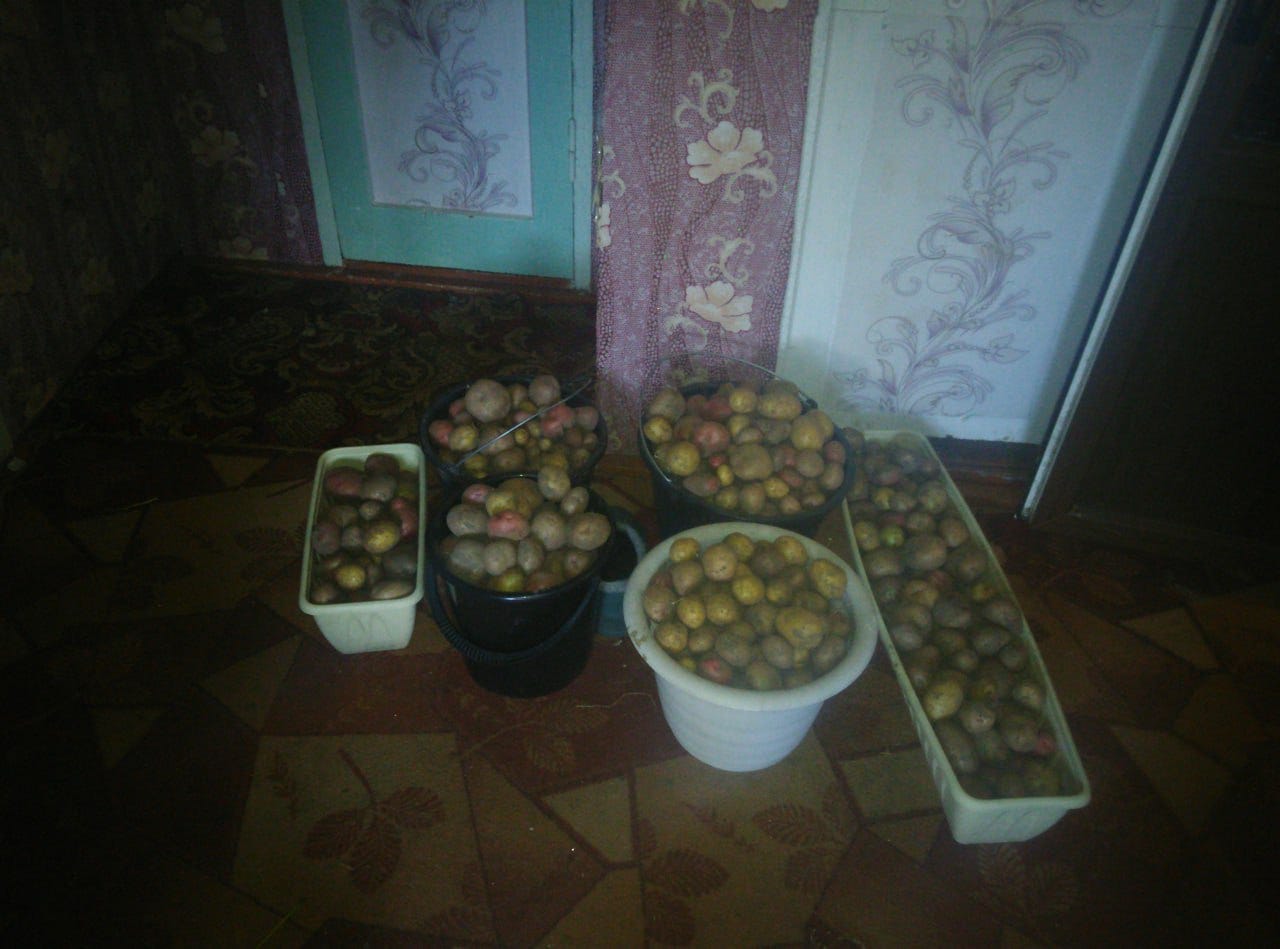Living off the land in rural Russia
An expat villager shares her journey of Russian self-sufficiency
What does it take to carve out a new life in the Russian countryside?
“Ekaterina”, an expat and longtime Russia resident who gave up the comforts of the city for the blood, sweat, and kefir of village existence, detailed her quest for self-sufficiency in an exclusive interview with yours truly.
You can read Part I of our discussion here.
We last spoke in late March, when it was still a bit chilly outside. Were there any unanticipated challenges or problems you encountered during winter? Compare and contrast “Russian winter in the city” with “Russian winter in the village”, please.
I knew it was going to involve making a lot of fires, which it did. 2-4 a day. With regard to the livestock—almost everything was unanticipated, of course, as we’re beginners. (Another like-minded woman, friend of a Telegram friend, also decided to buy a house here a few months after I moved in. Somehow we ended up with cows, goats, and chickens within a month.)
We had to keep them warm, which entailed stacking hay in the hayloft, hanging a blanket over the door, and buying various heating devices. During winter, our hay was covered in tarps outside. It froze. Gathering hay for the animals took an inordinately long time and we went through many pairs of gloves. The well pump hose froze too (we didn’t make it to the level of organization where we buried it in time), which means water had to be brought up using the good old bucket and rope on a spinning stick. Also I guess I didn’t expect as much shoveling.
The things that I didn’t expect that I would not class as problems or challenges: to walk out your door and, looking at the footprints/dog tracks/tire tracks, be able to figure out who had passed by and maybe where they were going. That most people liked to keep their houses really warm (+25 or above).That your neighbors know what time you wake up and go to bed by watching your chimney. That dressing up and going door to door for koliada was still a thing (but on its last legs, unfortunately).
Winter in the village vs. in the city… The population of Russia shifts to the city in the winter. So obviously we have fewer people. Only about 40 people winter in the village, while during the summer we have over 100 with dachniki and grandchildren. In the city in the winter there are more places to hide from the elements. You leave your building, and you can go into a store, or a café, or the metro, or a bus.
Here there’s your house and your destination, which is either someone else’s house, or the library/club (if open), or the avtolavka [a truck that sells stuff] that comes 4 times a week to sell groceries and sundries. People really aren’t out that much. There’s not a lot to do outside. After dark even more so. The bears go to sleep, but the wolves don’t. (I have yet to see either. I did see two moose, though, on the side of the road leading to the village. You don’t see them in the city.)
Tell us about your daily spring routine.
I wake up and drink coffee in front of the computer after I feed the cats and dog. That basically hasn’t changed, since I’m not the livestock milker. She wakes up every day and almost immediately extracts goodness from the teats of 2 lovely goats and one lovely cow, which at this point takes her about an hour all told, I think.
About every other day I go to help with the animals. So those days I do work in the mornings, maybe try to tidy up the house, maybe catch the store on wheels, and then head to the zoo.
We’re a bit over a kilometer away from each other, and now that the snow cover has melted completely (which happened, maybe, mid-April, although we got some snow in early May), I can ride my bike again.
There I haul manure, maybe give the animals hay, help let them out to go for a walk (we built a fence—which has not stopped them from escaping on a few occasions), and then do whatever task needs two people to do it, or move firewood from one place to another.
Then we drink tea and chat, and I go home, often with milk and eggs for our customers and/or me.
In the winter I planted some seedlings to replant in the greenhouse or outside when it got warmer. So they still have to be maintained. It’s planting season now, and I’m a bit behind. I’ve only got onions and carrots in the ground so far. And if it weren’t raining I’d be out getting the bed ready to plant beets instead of writing this. Since it is raining, though, I don’t have to water what’s already there.
Everyone plants the same things, and almost everyone does it—potatoes, carrots, beets, onions, garlic, squash, and cabbage. Also we have berries—strawberries and black and red currant are probably the most popular. And flowers. Mostly everyone does flowers. Of course some people plant odd things here and there. I have a few broccoli seedlings that have managed to survive. Cross your fingers for me.
You dived into the “self-sufficiency” thing without any background in agriculture. How did you get started? We imagine a lot of people want to grow their own beans, but are intimidated.
Well, first I bought a house with some land. Not a whole lot—8 sotki (800 square meters). IMHO you don’t really need a lot to start. Land is available for rent here for really cheap if you have bigger plans. We are hoping to find a nice plot to plant an orchard. And if you want to plant some potatoes across the road where there’s nothing—I don’t think you’ll get much pushback.
Then I moved into that house. I moved in early last May and wanted to plant as much as I could. But the only thing I knew about agriculture I learned by planting some radishes, sorrel, and peas in some pots on my balcony the year before.
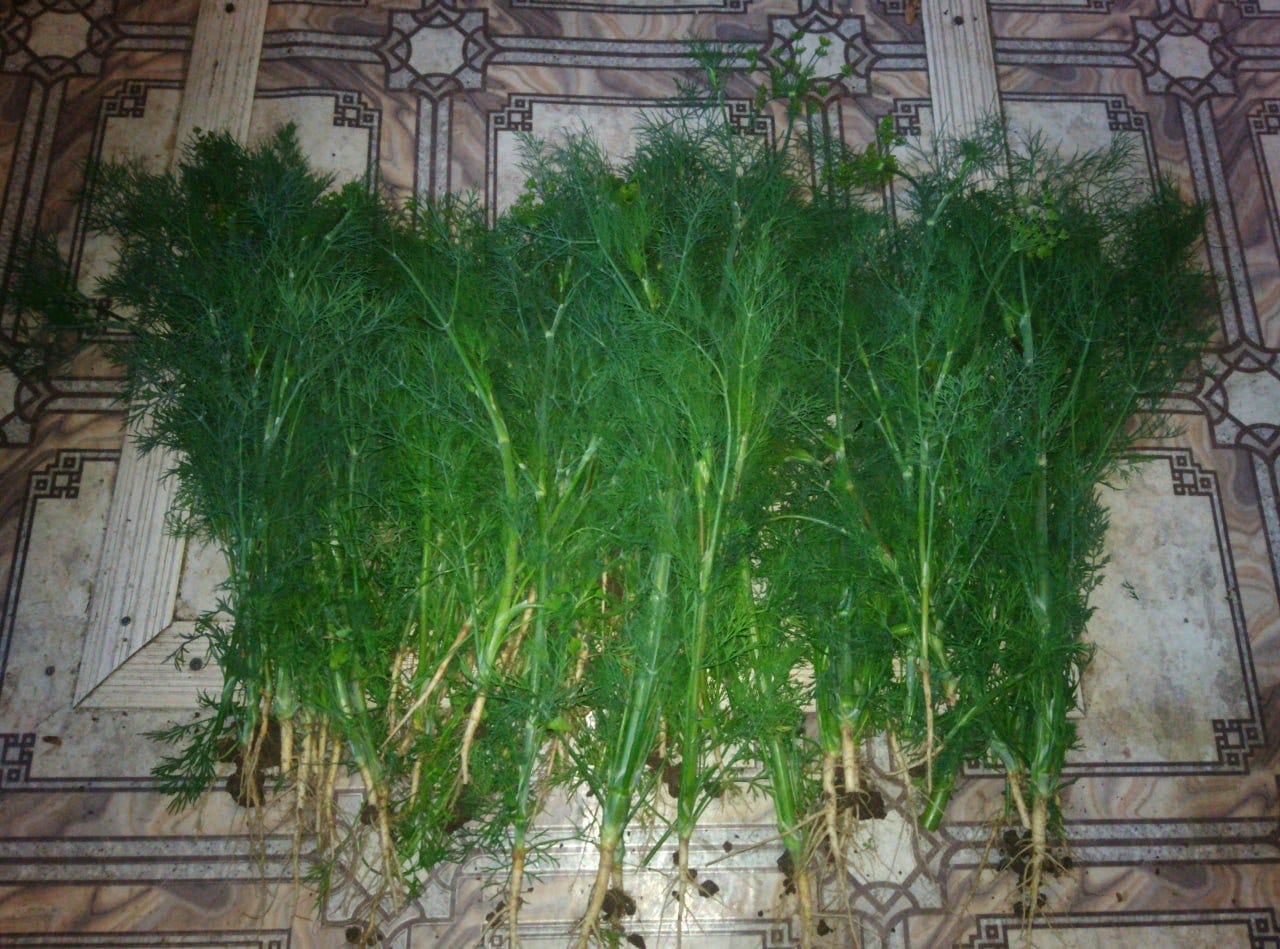
So after getting settled a bit, I walked out into my garden to assess the situation, which included garden beds, but ones that hadn’t been touched in years.
Luckily I soon spotted my neighbor (who has lived in a village all her life) working in hers, and realized that to do this any other way would be stupid and long. I went up to her (we had already met and chatted just a little bit) and said “If you were in my place, what would you do right now to get this started?” She told me, and I did it. That simple.
Wouldn’t you like to read the rest of this fascinating and probably life-changing interview? For as little as $5/month (that’s barely any rubles!), you can get the full Edward Experience. This blog is 100% reader-supported. Without your generous support, there would be no blog—and that would be tremendously sad.




